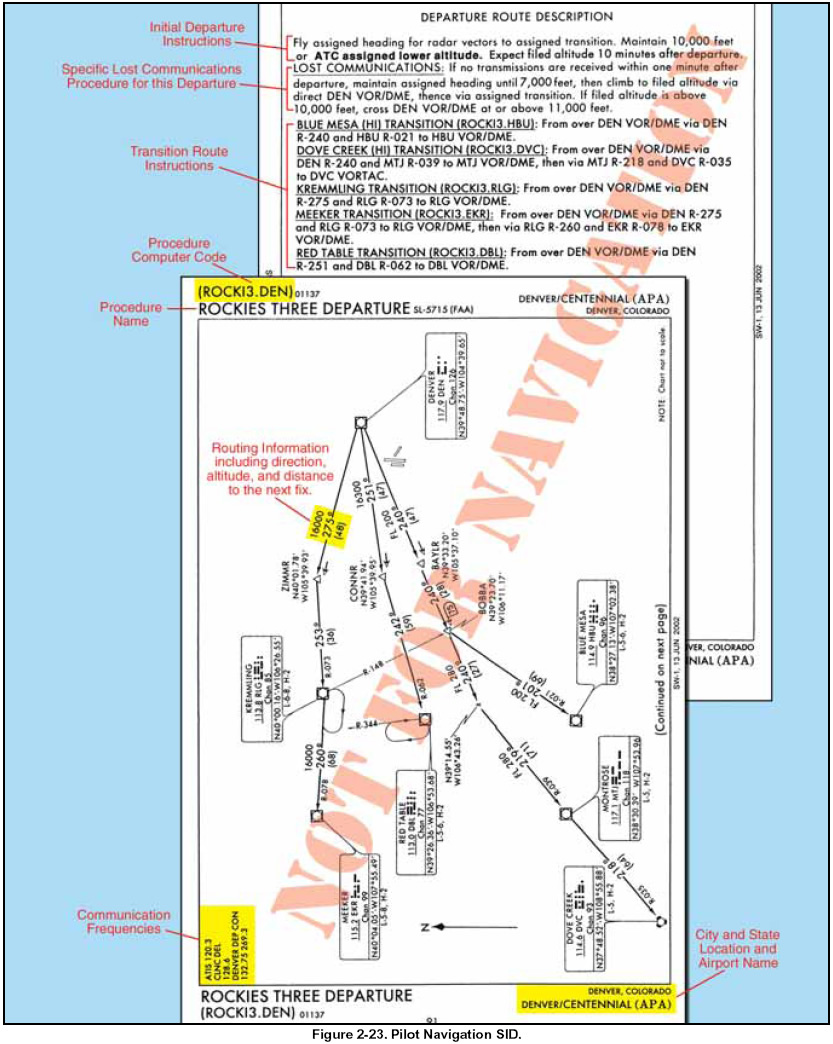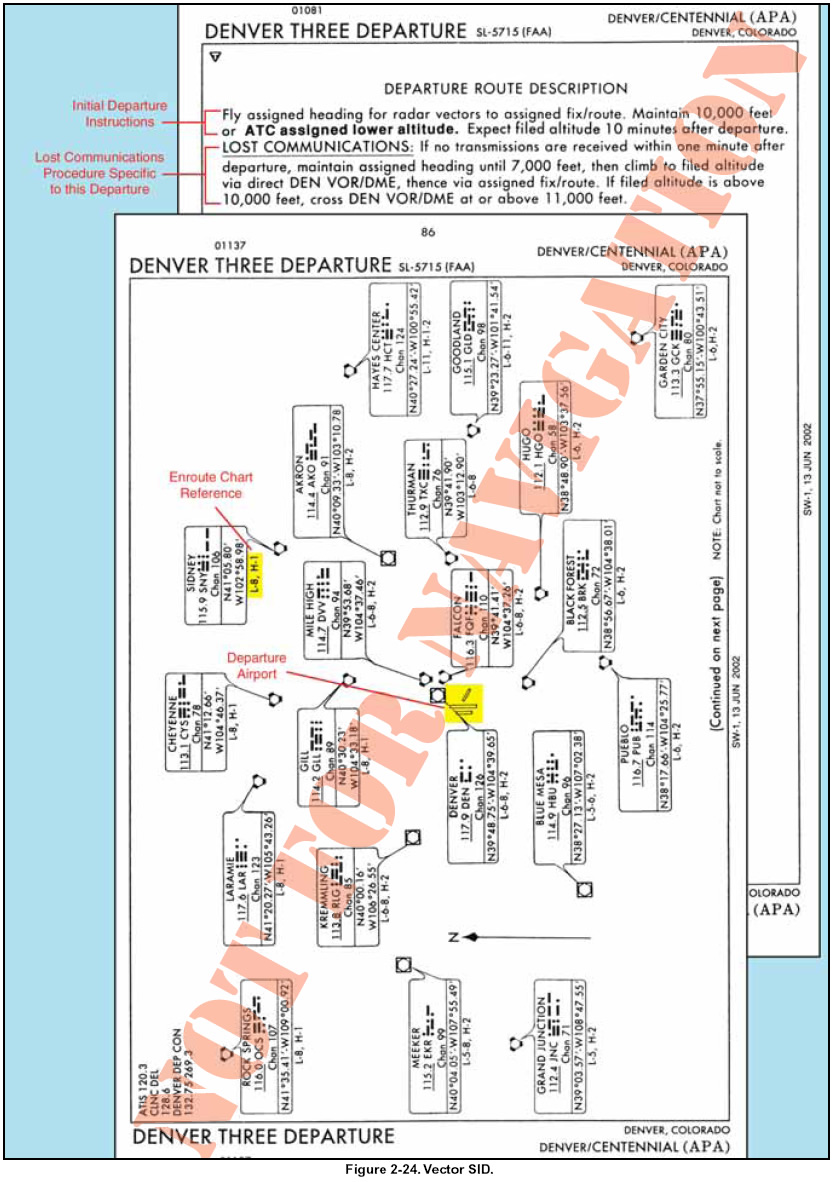 |
|
| INSTRUMENT PROCEDURES HANDBOOK |
|
PILOT NAV AND VECTOR SIDS SIDs are categorized by the type of navigation used to fly the departure, so they are considered either pilot navigation or vector SIDs. Pilot navigation SIDs are designed to allow you to provide your own navigation with minimal radio communication. This type of procedure usually contains an initial set of departure instructions followed by one or more transition routes. A pilot navigation SID may include an initial segment requiring radar vectors to help the flight join the procedure, but the majority of the navigation will remain the pilotís responsibility. These are the most common type of SIDs because they reduce the workload for ATC by requiring minimal communication and navigation support. [Figure 2-23].
A Vector SID usually requires ATC to provide radar vectors from just after takeoff (ROC is based on a climb to 400 feet above the DER elevation before making the initial turn) until reaching the assigned route or a fix depicted on the SID chart. However, some textual ODPs originate in uncontrolled airspace, while the SID begins in controlled airspace. Vector SIDs do not include departure routes or transition routes because independent pilot navigation is not involved. The procedure sets forth an initial set of departure instructions that typically include an initial heading and altitude. ATC must have radar contact with the aircraft to be able to provide vectors. ATC expects you to immediately comply with radar vectors and they expect you to notify them if you are unable to fulfill their request. ATC also expects you to make contact immediately if an instruction will cause you to compromise safety due to obstructions or traffic. It is prudent to review vector SID charts prior to use because this type of procedure often includes nonstandard lost communication procedures. If you were to lose radio contact while being vectored by ATC, you would be expected to comply with the lost communication procedure as outlined on the chart, not necessarily those procedures outlined in the AIM. [Figure 2-24 on page 2-24]
|

